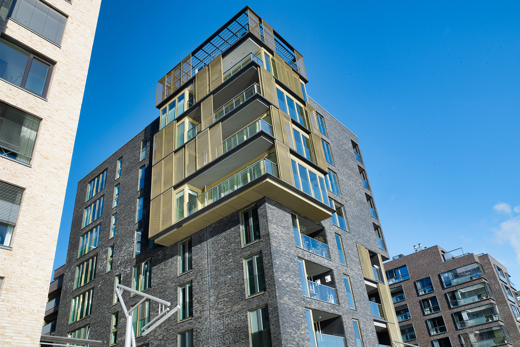
Today, district heating (DH) accounts for approximately 12% of the European heat demand. As an essential contributor to significant CO2 emissions reductions it is seen as important part of achieving our environmental goals. This is the reason our ambition for an environment friendly and energy efficient tomorrow needs to drive us to fulfilling even higher goals.

Creating a sustainable platform for tomorrow
As cities continue to grow and increasingly rely on multiple energy sources – the number of projected megacities (housing more than 10 million people) is expected to reach 41 in the year 2030 – energy efficiency will play a key role in actions against climate change.
Together, we shall take a look at some telling numbers.
- 30% of total EU energy consumption is used to heat and cool our buildings.
- 70% of an average household’s energy bill is spent on heating and cooling.
- 36% of the EU’s carbon emissions comes from buildings.
- 240bn Euro is spent by EU citizens on space and water heating per year.
With numbers mentioned in mind, it is clear that long-term solutions need to be developed and applied. Industry leaders such as Danfoss have been providing energy efficient technologies and working with national and local governments worldwide to engineer district heating systems that not only deliver superior performance and value today, but also create a sustainable platform for tomorrow.
Case-studies and results show the extent of change modern district energy systems can bring to the equation. In Hamburg, Germany, cost-effective and sustainable solutions are already in place in HafenCity, the vast inner-city quarter. Its mix of apartments, offices, recreational facilities, retail trade and culture facilities has been supported by the standard-setting energy concept. The Danfoss control equipment installed in a wide range of buildings for the distribution of district heating ensures that every single kilowatt of energy is used as efficiently as possible, to the benefit of house owners, tenants and the energy supplier.
District heating is an economical and environmentally friendly solution
The heat supplied in district heating is produced in an energy efficient way which has the potential to significantly cut greenhouse gas emissions.
In many countries, district heating has already been actively promoted as an important component of national strategic energy planning. With the increasing awareness of energy security supply, fossil fuels will be gradually phased out and replaced by renewable energy. Heat sources for DH can include waste incineration, geothermal, solar thermal, biomass/gas, or a combination of different renewable energy sources. The ability to use so many different sources underpins the important role DH is going to have in the future energy supply structure.
By going digital, we can achieve new milestones on the road to a greener future
There are new strategies and new technologies that can be incorporated into our approaches to energy generation and consumption. These are reflected in new regulation as well as a push from consumers and brand-new players entering the field with innovative ideas and concepts. While the green energy transition runs full speed, the district energy community needs to meet the new reality with forward-looking responses. Extensive use of digitalisation throughout the entire district energy system from plant to home is one of major opportunities which can also make the whole energy system smarter, more efficient and more reliable.
In future, digital energy systems will enable district energy companies to fully optimize their plant and network operation while empowering their customers and end-users. There is no reason to wait, technologies are maturing by the day and the benefits are numerous and tangible – improved efficiency, better demand forecasting, greater flexibility, reduced emissions, better comfort, and cost-effective operation and maintenance to name but a few.
It is time to embrace new opportunities
Equipped with new ideas, know-how and our common energy, now, more than ever, we need to focus on the achievement of our goals aimed towards a cleaner, environmentally friendly and cost-effective future. In order to achieve such goals, industry pioneers, local, regional or state policy makers, property owners, investors and end-users will have to work hand in hand. Let us all become a part of this change.

Case: HafenCity
What is it? Europe’s largest inner-city development project setting standards in sustainability and energy efficiency.
What’s the size of it? HafenCity covers 155 hectares of harbour area with a mix of apartments, offices, recreational facilities, retail trade and culture.
How does it work? To develop an energy supply concept that fulfils the strictest economic and environmental requirements, well-proven Hamburg district heating system is combined with decentralised, local heating distribution units. The fuel used is mainly coal, along with household and industrial waste, natural gas, and very small quantities of light fuel oil.
How efficient is it? The district heating is distributed to buildings in HafenCity via Danfoss sub-stations and domestic hot water systems, ensuring that every single kilowatt of energy is used as efficiently as possible. The buildings are also equipped with other Danfoss technologies, which control the energy consumption of heating and cooling systems and deliver a comfortable indoor climate. HafenCity’s goal is to reduce CO2 emissions by 40% in 2020.
Learn more
Danfoss is one of the most experienced district energy authorities in the world and we’re ready to partner with you on your district heating or cooling projects. Read more about Danfoss District Energy Solutions & Applications.




